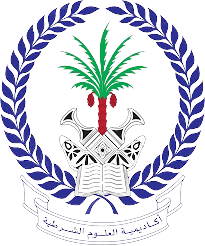
While drawing from this supply is certainly an option, it’s always important to start by creating a plan to capture the data you know is critical to your project. This knowledge—paired with other data skills—is what many organizations look for when hiring. The correct use of the System Development Life Cycle has a large number of benefits. The implementation of a lifecycle for a system opens up a lot of possibilities, including the ability to plan and organise structured phases and smart goals beforehand. If this is done in the production environment, this is usually done by a Quality Assurance professional. He or she will determine if the proposed design meets the company’s goals.

There is a lot of literature on specific systems development life cycle (SDLC) methodologies, tools, and applications for successful system deployment. Not just limited to purely technical activities, SDLC involves process and procedure development, change management, identifying user experiences, policy/procedure development, user impact, and proper security procedures. Books such as David Avison and Guy Fitzgerald’s Information Systems Development and Alan Daniels and Don Yeates’ Basic Systems Analysis, delve into the intricacies of information systems development lifecycles. This article will provide an in-depth analysis of the history, definition, phases, benefits, and disadvantages, along with solutions that support the system development life cycle. The principal objective of a feasibility study is to determine whether the system is desirable on the basis of long-term plans, strategic initiatives, and a cost-benefit analysis. System analysis provides a detailed answer to the question, What will the new system do?
More about IT management
To be effective, however, ILM needs to be an organization-wide effort, involving procedures and practices, as well as applications and technology platforms. That ability to better track and retrieve information provides a key benefit for IT, the legal team and the business when faced with e-discovery requests, according to consultancy Deloitte. Application lifecycle management (ALM) is the people, tools, and processes that manage the life cycle of an application from conception to end information systems lifecycle of life. Object-oriented analysis and design (OOAD) is the process of analyzing a problem domain to develop a conceptual model that can then be used to guide development. During the analysis phase, a programmer develops written requirements and a formal vision document via interviews with stakeholders. It’s important to note that many organizations take a broad approach to data collection, capturing as much data as possible from each interaction and storing it for potential use.
Learn more about our online course Business Analytics, or download the Beginner’s Guide to Data & Analytics to learn how you can leverage the power of data for professional and organizational success. Below is a walkthrough of the processes that are typically involved in each of them. Harvard Business School Online’s Business Insights Blog provides the career insights you need to achieve your goals and gain confidence in your business skills. EU GDPR has regulated various aspects, which require data controller and data processor to reframe the IT solution. By making access to scientific knowledge simple and affordable, self-development becomes attainable for everyone, including you!
For example, ILM object “FI_DOCUMNT” provides all the necessary functionalities for data object financial posting. These can be solved during the maintenance phase when the whole system is refined to improve performance, or to meet new requirements. Sometimes staff will need additional training to meet this goal, new procedures must be put in place, or updates must be made. During the fifth phase the system is installed in the production environment. Many organisations opt to have the system tested elsewhere first, in a special testing environment. The third phase is the moment when end users have an opportunity to discuss and decide their specific information needs.
Modular design reduces complexity and allows the outputs to describe the system as a collection of subsystems. For example, as the system analyst of Viti Bank, you have been tasked to examine the current information system. Customers in remote rural areas are finding difficulty to access the bank services.
Although data typically passes through all seven stages, this process should not be thought of as a strictly linear flow of information. For example, data creation and collection are ongoing operations that can occur as some of the data passes through other phases. In addition, data might be transformed before it is stored, after it is stored or both before and after. Meanwhile, data use might come right after data is stored, right after it’s transformed or both.
Mid Journey AI Beginners Tutorial: Getting Started in 2023
Despite the fact that some steps are more difficult than others, none should be skipped. The new system is now being implemented in the production environment, replacing the old one. This stage entails transferring fresh data and components to the previous system’s location. The system is now available to end customers following its installation. Interestingly, irrespective of the industry, information lifecycle management remains similar – from online retailers to banking, telecom or insurance businesses.
- SAP Information Lifecycle Management (ILM) is the standard solution provided by SAP to cope with rule-based data retention in SAP S/4HANA OP, SAP S/4 HANA Cloud and SAP Business suite systems.
- It then classifies and stores the created and managed information such that it’s retrievable when required.
- In order to understand the concept of system development life cycle, we must first define a system.
- Innovative Architects’ systems development professionals have a lot of expertise with these kinds of projects.
Regardless of the process implemented and the tools used, all require the crucial element of documentation to support findings, close iterative phases, and to analyze success. Today’s increasing demand for data and information security also factor into the overall planning, training, testing, and deployment of a system. The iterative and phased stages of an SDLC benefit from the leadership of a dedicated project manager.
A platform for developing cloud-native applications that automate business decisions and processes. A business automation platform for business rules management, business resource optimization, and complex event processing. Baselines[clarification needed] are established after four of the five phases of the SDLC, and are critical to the iterative nature of the model.[21] Baselines become milestones.
The waterfall approach means each phase must be completed before the next phase can begin. An existing system is replaced by a new system that consists of replaced components or modules to ensure that it meets new requirements. SAD is mostly used to find a balance between requirements at a higher level. The seventh phases of the Systems Development Life Cycle (SDLC) is often ignored or missed. This phase consists of maintenance and performing regular necessary updates.
Extreme Programming (XP) explained
The development phase marks the end of the first stage of the Systems Development Life Cycle (SDLC). The first phase is the evaluation of the existing, or current, system. This is where shortcomings are officially determined by a system analyst. https://traderoom.info/ These shortcomings were probably already present, so a good way to find out about them is interviewing support staff. Additionally, this framework ensures that the system is developed within the given time constraints and budget.

In the 1960s, mainframe computers hit the consumer market, and living rooms came to be filled with large systems. At Distinguished.io, we bring you some of the best business development companies that specializes in creating SDLC for IT companies. It comprises different steps that need to be done constantly for better performance of a particular system. The negative results generated by the application are then resolved by utilizing different techniques. The recommendations are implemented according to the test results and integration done in the previous steps.
These operations consist of, amongst other things, making flowcharts that ensure that the process and new system are carefully organised. After an installed system is handed over to its users and operations personnel, it will almost invariably be modified extensively over its useful life in a process known as system maintenance. A large system will typically be used and maintained for some 5 to 10 years or even longer. The ISLC is a useful framework for managing the development, maintenance, and retirement of an organization’s information systems. It helps to ensure that information systems meet the needs of the organization and are developed in a structured and controlled manner. However, it can be difficult to maintain control over the entire process, especially as the organization’s needs change over time.
Systems analysis and design (SAD) can be considered a meta-development activity, which serves to set the stage and bound the problem. SAD interacts with distributed enterprise architecture, enterprise I.T. Architecture, and business architecture, and relies heavily on concepts such as partitioning, interfaces, personae and roles, and deployment/operational modeling to arrive at a high-level system description. This high-level description is then broken down into the components and modules which can be analyzed, designed, and constructed separately and integrated to accomplish the business goal. SDLC and SAD are cornerstones of full life cycle product and system planning. Information lifecycle management policy consists of the overarching data storage and information policies driving management processes.
For example, certain projects may have to be carried out immediately to satisfy a new government reporting regulation or to interact with a new customer’s information system. Other projects may be given a higher priority because of their strategic role or greater expected benefits. Industrial methods of software production and reuse have been implemented in systems development. Thus, reusable software components are developed, tested, and catalogued to be deployed as parts of future information systems. Those involved in the SDLC include the c-suite executives, but it is the project/program managers, software and systems engineers, users, and the development team who handle the multi-layered process. Each project has its own level of complexity in planning and execution, and often within an organization, project managers employ numerous SDLC methods.
TRIANGLE INSIGHTS GROUP STRENGTHENS NEW YORK TEAM … – PR Newswire
TRIANGLE INSIGHTS GROUP STRENGTHENS NEW YORK TEAM ….
Posted: Tue, 09 May 2023 14:30:00 GMT [source]
It also helps ensure compliance with industry regulations and government laws. As the business or organization matures, it archives the older information and deletes obsolete data. It also secures the stored data to ensure that only authorized people can access it. Therefore, businesses continuously analyze and assess data to use it for forming strategies and for decision-making processes.
- In addition, ILM enables more complex criteria for storage management than systems that rely only on basic metrics, such as data age or access frequency.
- Planning is the first and the most important part of the system life cycle.
- An output artifact does not need to be completely defined to serve as input of object-oriented design; analysis and design may occur in parallel.
- Toolshero supports people worldwide (10+ million visitors from 100+ countries) to empower themselves through an easily accessible and high-quality learning platform for personal and professional development.
- Some companies see so much value in the model that it is used for other projects, including non-technical projects and activities.
Training usually covers operational training for support staff as well as end-user training. Design documents typically include functional hierarchy diagrams, screen layouts, business rules, process diagrams, pseudo-code, and a complete data model with a data dictionary. These elements describe the system in sufficient detail that developers and engineers can develop and deliver the system with minimal additional input. In systems design, functions and operations are described in detail, including screen layouts, business rules, process diagrams, and other documentation.
While referred to here as a “step,” it’s an ongoing process that takes place from the beginning through the end of a project. Data management includes everything from storage and encryption to implementing access logs and changelogs that track who has accessed data and what changes they may have made. Besides SDLC, there is another concept that is a cornerstone for the entire lifecycle of product and system planning. Systems Analysis & Design (SAD) is a process during which specific information systems are developed that effectively support hardware, software, or people. Some methodologies offer specific outlines to go through this process to prevent costly mistakes or to speed up development. However, all methods are aimed at moving systems through the various relevant phases.
Several faster and more affordable options for learning basic data skills exist, such as online courses. After data has been collected and processed, it must be stored for future use. This is most commonly achieved through the creation of databases or datasets. These datasets may then be stored in the cloud, on servers, or using another form of physical storage like a hard drive, CD, cassette, or floppy disk. It’s up to your data team to identify what information should be captured and the best means for doing so, and what data is unnecessary or irrelevant to the project at hand. This process is repeated again and again, with each iteration yielding a new version of, for instance, the software.
Contract Lifecycle Management (CLM) Software Market [2023-2030 … – Digital Journal
Contract Lifecycle Management (CLM) Software Market [2023-2030 ….
Posted: Mon, 08 May 2023 08:49:08 GMT [source]
It takes them days or even weeks to travel to a location to access the bank services. Relevant questions include whether the newly implemented system meets requirements and achieves project goals, whether the system is usable, reliable/available, properly scaled and fault-tolerant. Process checks include review of timelines and expenses, as well as user acceptance. While this framework’s phases use slightly different terms, they largely align with the steps outlined in this article. Data visualization refers to the process of creating graphical representations of your information, typically through the use of one or more visualization tools.
Creating an ILM strategy can help businesses determine how to treat their data, information and storage media or leverage tiered protection. When the business eventually starts its operations, it begins creating and collecting information that it further uses to fine-tune its processes and procedures. It then classifies and stores the created and managed information such that it’s retrievable when required. Businesses must manage information and data throughout their lifecycle. ILM starts when they create or receive the record and later covers its usage, maintenance, storage and retrieval.
If located in-house, the management of information systems can be decentralized to a certain degree to correspond to the organization’s overall structure. Once the need for a specific information system has been established, the system has to be acquired. This is generally done in the context of the already existing information systems architecture of the firm. The acquisition of information systems can either involve external sourcing or rely on internal development or modification.




